#love my tragic gay puritans
Explore tagged Tumblr posts
Text
As you all know, I have been taking a small break from AYCF to start working on my original novel. What is this novel you may ask?
Well, over the course of about seven months, and thanks to my friends and my brain. These two have become near and dear to me. Richard Bastion and Frederick Mansell have gotten so much lore and character development. I decided to turn their backstory into a full original novel called "An Ember in the Twilight" starting from when they meet until Fredericks death.
I realized I could entirely remove Caleb, Philip, and anything related to TOH from the story and still have certain events happen without their presence. ( I already solved those plot holes.) I have always wanted to write an original novel, and since I already have a strong connection to Frederick and Richard's story and them as characters, these two were the perfect subject for it ^_^
I'm also trying my hand writing the first person, switching between Richard's and Frederick's POV.
In the meantime, please enjoy this wholesome art of Frederick and Richard as kids( back when they were best friends before the tragedy). I commissioned from my friend the one and only @bananadramaaa

As an added bonus, here is a small snippet as well.

#art commision#original characters#these two are living rent free in my brain#i cant with them#love my tragic gay puritans#these two will be the death of me
9 notes
·
View notes
Note
im not sure I have the property to say this since ive only been watching loki through twitter, but did you also get a little bit of a ted lasso finale vibe?
hmmm not really? with ted lasso's ending, none of what happened made any sense narratively or thematically. with loki's ending, it fit both narratively and thematically (to me at least).
but similar to my thoughts on ted lasso's ending, i do think loki's ending would have been elevated if those two old men had kissed.
i also will add that loki is Marvel. we know what to expect from A Marvel Show because at the end of the day, it is under Disney's Ironclad Fist. allowing their main character loki to be Explicitly Queer Onscreen (rather than just mentioned) was never ever going to happen. that would have alienated Disney's domestic viewers, sure, but to them more importantly countries such as China (who have historically barred queer media from being shown) would have pulled financial backing. and Disney Loves Money More Than Creative Storytelling, so...why would they risk upsetting their profit margins? also also Disney is rooted in evangelical christian support, and has strong affiliation with being conservatively Family Friendly. a gay kiss? not happening for one of their most famous and beloved MCU characters.
meanwhile, AppleTV isn't beholden to this puritanical expectation nor does it have decades of financial ties. ted lasso was one of their biggest shows. they marketed ted lasso's S3 as this amazing, industry-changing phenomena. Oh My God Ted Lasso Is Ending You Don't Want To Miss This Finale type vibe. we were led to believe ted's journey would end up one place....and then it didn't. this could be abt tedbecca or tedtrent, those two endgames are in the same boat in my opinion. as a character, ted himself is intensely queer-coded. it's undeniable. it would have fit the vibe of the entire show's premise about Found Family + Accepting Love In All Forms for ted to be canonically bisexual or queer. THAT would have been a strong weight thrown in the industry, imo. but no, ted goes back to his straight, lonely, dull life in kansas for no solid reason (despite rebecca laying out a perfectly good option for both henry and michelle to join ted in london).
loki stuck the shakespearean tragic hero landing. loki IS burdened with a glorious purpose. loki HAS to end up alone. him choosing loneliness is integral to his bigger purpose within the narrative itself. the entire story and his entire character arc builds up to him acting selflessly with integrity in order to protect his friends. here you have a trickster god who spent his entire life begging to be seen by someone, then gets seen by someone, and then has to let that someone go for their perceived betterment. loki, a notoriously selfish, lying motherfucker who blew up NYC, goes through this immense transformation to where he fundamentally changes who he is. loki at the start of season one is not who loki is at the end of season two. the way he deals with feelings of loss is night and day. his lonely ending is cathartic because it feels earned and comprehendible and it carries weight from how it highlights his character growth.
can we say the same about ted lasso himself? no. ted lasso in season one is not who he is in the end of season three, true. externally, he becomes divorced, he leaves richmond, he went to therapy. but intrinsically he as a character did not grow enough to where him choosing his lonely ending felt cathartic. throughout the show, ted takes on the role of Carer. he Has To Care For Others, yet he tends to reject people when they want to take care of him. we see him struggle with depression, alcohol dependence, emotional unavailability, panic attacks, homesickness, and guilt. when season three reaches midway, we see him find solace in his friends and community and learning to be alone. even with his mom, a triggering person for him, he vocalized his feelings in an honest and truthful way. ted's character arc is written to match the show's theme of found family, acceptance, and love.
and that, to me, is why him going back to kansas did not work. there wasn't any catharsis in ted lasso's ending. it negates the thematic intent, as well as defies the narrative itself. a comedy can genre-bend into dramatic tragedy, yes, but not in the literal last hour. tragedies only work when they feel earned and cathartic. tragic heroes need their arcs to carry weight which feels worthwhile. ted lasso held none of these genre values
#maybe one day i will Get On Camera and record/edit a deep dive into the failure of ted lasso's s3#anyways. cant believe im praising marvel for this
4 notes
·
View notes
Text
Anne with an ‘E’: a personal review
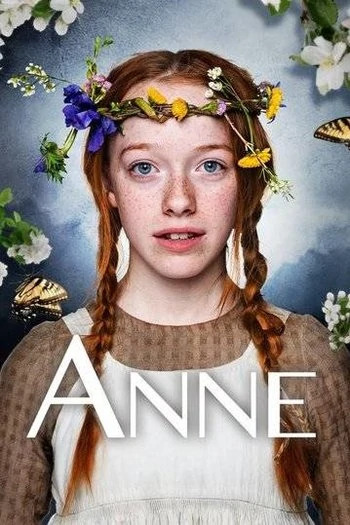
I loved this book as a child (well, as a teenager....I discovered it very late into my teens). I loved the Kim Braden BBC TV version too, which was very faithful to the book, if memory serves me right. So it was with a certain amount of trepidation that I began watching the CBC/Netflix version produced by Moira Walley-Beckett and staring Amybeth McNulty as Anne, because I knew it had taken liberties with the Book and injected a lot of late 20th and 21st Century ‘woke’ issues, into what I remembered as an innocent, sweet book about an odd little white orphan girl adopted by an elderly spinster and her brother, growing up in a late 19th century all-white farming community. in Canada’s smallest province, Prince Edward Island.

Would revisionist Anne of Green Gables therefore be a Afro-Canadian or First Nations (that’s Red Indian to you, if you are still asleep) girl with a physical disability, adding to her already disadvantaged status as the abandonned waif reluctantly adopted in place of the boy that Matthew and Marilla Cuthbert had asked for? Would Anne and Diana, her bosom pal, discover the delights of teen lesbian sex? Would we be treated to Anne indulging in a bit of onanism, or giving Gilbert a hand-job, or worse, and Marilla and Matthew ejoying incestuous relations (see ‘Sanditon’ for more of this kind of revisionist and grindingly ‘woke’ television)?
Fortunately for lovers of Anne of Green Gables, the wildest excesses of ‘woke’TV were avoided. We DID have one of the schoolboys, Cole the pretty, artistic type( spot the cliche!),
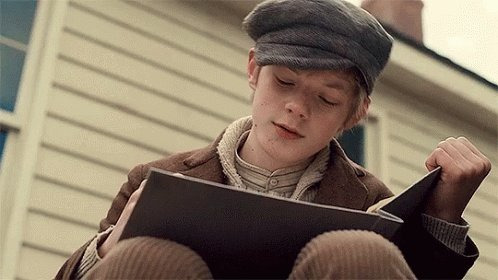
being bullied by the sporting jock Billy Andrews and his gang of brainless acolytes (more cliches), before finding shelter and a release for his artistic talent at the home of Diana’s Aunt Josephine, who in this series is a Sapphic and hosts amazingly decadent parties for her gay and arty friends ( I had no idea PEI was so advanced in the late 19th Century: gay central and great fun!). We had the minor character of the French boy Jerry Baynard (Buote in the book?) become a major character, in love with Diana but spurned because ...well, he’s French, and of course the English people are baaaad (all the wealthiest people are English English with cut glass accents with which to cut people dead, the snaaabs).
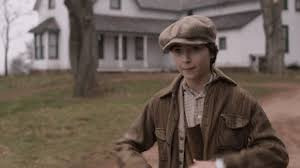
And, we are introduced to Sebatsian (’Bash’) a Trinidadian friend of Gilbert, who starts his own Afro-Caribbean family , also outsiders in Avonlea and struggling with racism and former slave cultural cringe whilst setting his hand to farming.
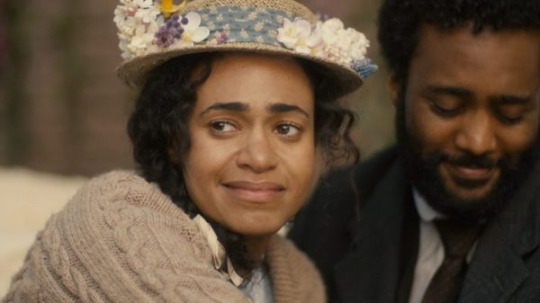
Plus, lest we forget, we have the horrific tale of Ka’kwet, the Mi’kmaq friend of Anne whyo is forcibly sent to a government boarding school to have the Indianness beaten out of her.
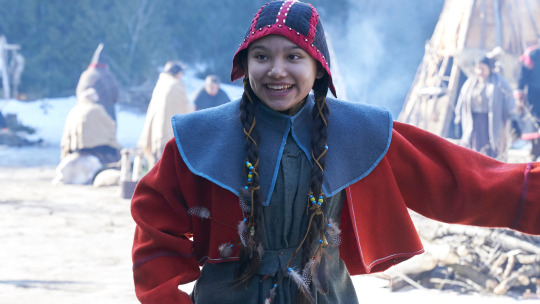
Naturally the perpetrators are Catholic nuns (hiss, boo!), whilst the character in the book who Anne describes as her kindred spirit, Rev. Allen, is of course here a bigotted clergyman leading the group of reactionary old white men (hiss!) who endeavour to get beautiful, trouser wearing, motor-bike riding feminist teacher Miss Stacy fired, and burn down the school for good measure. (Yah boo and double hiss! )

So much for the wokeness. Which is what we old snaaabs who like traditional opera and theatre performances find infuriating, where for example the director strives desparately to make things relevant by dressing Puritan-era soldiers in Nazi uniforms (see! fascist parallels! Boo, hiss!) , or having the cringingly ‘woke’ Shakespeare you can see these days at London’s Sam Wanamaker theatre, with HenryV played as a transexual-of-colour. just in case you needed to be woken from your slumber with right-on wokeness beaten into your brain with a mallet. Ah, it’s such fun to ‘epater les bourgeois’ and signal your virtue at the same time.
But in this version of Anne’s story I’m glad to say that although forced and didactic at times the new characters and novel situations, were extremely well acted and put together, ( notably Bash and his tragic wife Mary) whilst for the most part fans of the original book will be very, very happy.

All the leading roles, especially Matthew (RH Thomson) and Marilla (Geraldine James). (spoiler alert: Matthew doesn’t die in the only three seasons allowed us by those buffoons in Netflix), were well played.


Fascinating, character revealing back-stories were put into the basic story. I loved the evocation of 1880′s Prince Edward Island (I can’t wait to go there), and what is was to be school-children in a one-room school-house. I liked Rachel Lynde’s feisty character and her love for her bumbling husband. And I’m always fond of dear old dutiful Diana,
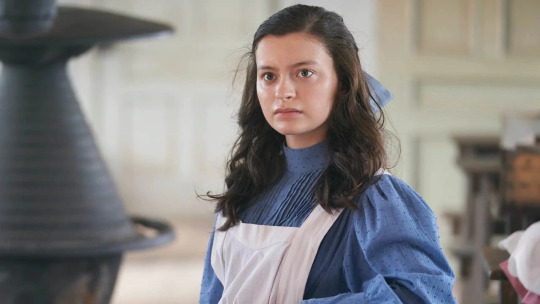
and earnest Gilbert Blythe.

But the crown should go to AmyBeth McNulty for her sparkling performance as Anne, struggling with her insecurity, her awkwardness, her gaucheness, her worldly knowledge of how cruel the world can be, and her determination to do something about it, all among the perils of growing up from innocent child (the first period episode is priceless) to barely adult college student. Anne. With an E. I think you’ll love it
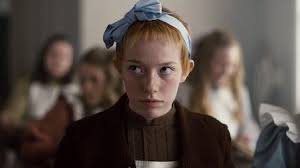


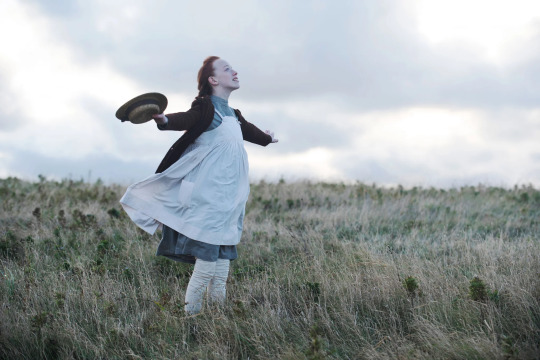
#anne with an ‘e’# anne of green gables #anne cancelled after only three seasons
69 notes
·
View notes
Text
Outdated/Sexist Fantasy Storytelling Tropes To Avoid Like A Necrotic Plauge
Recently whilst playing & serving as DM for several RPG games I've encountered some tired cliches that I believe need to be broken.
1) Raped to Glory: She was violated, used and abused. Because of this she rose to the ranks of hero (or revolutionary or whatever.)
Sexual assault shouldn't be the catalyst that transforms a woman into a hero. It's demeaning and promotes the misogynist idea that a strong woman can only be created by a man.
2) Horny Overlord: Now that you are in their clutches, the evildoer will take his pleasures in you. (On you?)
Let's lay the old sexual predator King to rest please. Just because a man is powerful doesn't mean he must lust over the heroine and ultimately seek to punish her for spurning him by forcing himself on her. A more compelling villain could have an equally evil love interest by his side, or perhaps be unswayed by the pleasures of the flesh.
3) Rape is the Worst Form of Torture: You are shackled and naked.
One should not use sexual violence as the worst torture a character can endure. There are a myriad of more compelling ways to communicate terror and create emotional investment and urgency in players/readers. When you use rape to depict "this is the ultimate evil that can be inflicted." You are saying that a woman's (or person's) sexually is all they really are and when it's compromised that person is broken and worthless.
4) Homosexual People/Couples/Romances are Frought with Hardship and Ultimately Doomed: otherwise known as "Bury Your Gays:" Their tragic love gave them the strength to fight, but then they died.
The best part of writing/playing a RPG or fantasy world is the freedom to make the world what you want. Don't let the trope of western Puritanism inform your world. If there isn't any Homosexual or Non Binary characters in your group/main characters, don't allow those who come into the story to be an oddity or unnatural occurace. Allow equality and diversity to exist from the beginning!
~
Of course these are NOT the only tropes that should be avoided. And the reasons to leave them in the dust are way more complex and lengthy than what I've listed here.
But in my opinion this is a good starting point.
🎲🎲🎲
83 notes
·
View notes
Text
Review of “Mistress Moderately Fair”, historical f/f romance between actress and playwright
This review originally appeared in The Lesbrary
The English Restoration, i.e. when Charles Stuart II returned to England to take his father’s throne back from the Puritans, fascinates me for being a renaissance of both art and hedonism. Theaters opened again after being banned, and all kinds of sexual openness flourished. I purposely sought out queer lit set in this time period – not that there’s much, given that historical LGBT romance skews heavily Regency – and was rewarded with Mistress Moderately Fair by Katherine Sturtevant. I think it’s out of print, but WorldCat has it at these libraries and Amazon has used copies.
Mistress is about a woman who comes to London to become an actress, and in the course of doing so falls for the lady playwright who’s been helping her hone her skills. It delivers most generously on lesbian romance, on plot twists and turns, and on evocative language. The author’s also done a remarkably good job at bringing a time period to life pretty vividly without falling prey to “look at meeee, I’m so well researched!” I felt the exciting earthiness of the time.
The actress, who is going by Amy but that isn’t her real name – she’s the Beauty with a Mysterious Secret Tragic Past trope – is scarred across her face, prompting the line: “I know I have a garden in my face – the roses and the thorns.” How it got that way, and what she’s hiding from, comprise the main conflicts of the book. She’s never heard of queerness before she came to London, not understanding why she’s so immensely, irrevocably drawn to her playwright friend Margaret, until one of her fellow actors gossips to her about their gay boss. Wait, that’s a thing people can do? Is that why I–
And straightaway, beautiful sensual sapphic prose starts gushing out all over the reader:
“I have deceived you,” [Margaret] said. “I have no poetry to share with you.”
“You are deceiving me now,” Amy said in a shaking voice, “For you are yourself a poem, and I have been hungering for you to share yourself with me.”
Their sex scenes glorify in sensuality, with that enthusiastic appreciation of breasts that validates my own impulses so soothingly. Amy is “my type” – a buxom, squishy, gorgeous brunette with luxurious hair and a tragic past. Margaret is one of those independent, outspoken, able to live slightly outside of society’s rules widow characters. They have chemistry from their very first encounter, and are totally believable as a couple.
“MARGARET AND I HAVE BECOME FRIENDS!” Amy gushes into her diary, too cautious to write what she really means. She goes on to add “I will say that we wrote poetry together, and whenever I read those words, I will know what they mean. And they are true indeed, for we have writ such poetry as I never dreamed of!”The metaphor doesn’t stop here, so the book is almost worth it for the “cunnilingus = poetry” jokes alone.
I love the way this book talks about writing inspiration and the way we create idealized and alternative versions of the people in our lives to interact with on the page. So very relatable.
The liveliness of the time period is evident in the snappy dialogue:
“I heard you had returned from the dead,” says the gay theater owner to someone recovering from violence. The man’s reply is “I did not like being dead, for the plays in heaven were quite dull and not the least bawdy.”
In one scene the two leading ladies recognize and mourn how it was easier for a man to be accepted for sleeping with men than a woman with other women, mainly because of misogyny. Incidentally this is a book that recognizes bisexuality as a phenomenon (without actually anachronizing by using the word), which was a nice touch.
My one quibble, and it’s a major one that’s the reason for the missing star, is the treatment of the book’s minor characters of color. Since it’s out of print, it would satisfy me deeply if this book were to return to print with those parts reexamined especially since they could be tweaked with zero impact on the actual story itself. I like the fact that the enslaved cook from next door insists right away that the main character call her by her real African name instead of the English name her own captor gave her–and that Margaret immediately does so–and I like the fact that the main character buys her and frees her at the end. But both she and her friend, another African captive, speak in broken English that felt awkwardly executed to me, and there are passages exoticizing her religious beliefs without actually adding anything to the story itself. I’m glad she was freed at the end but it would have been even more satisfying if she’d left England with the main character’s blessing after being freed instead of being asked to stay on as a servant and sneak out.
Trigger warnings: sexual assault in a flashback, and also for a brutal attack sustained by the gay supporting character from his lover’s brother’s henchmen. I found the lesbian positivity in the book so overwhelmingly affirming that it didn’t bother me as it ordinarily might have, but it’s there all the same.
28 notes
·
View notes